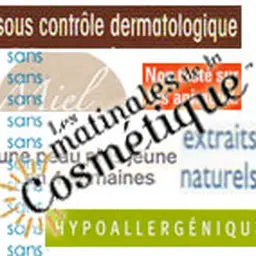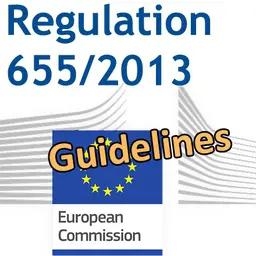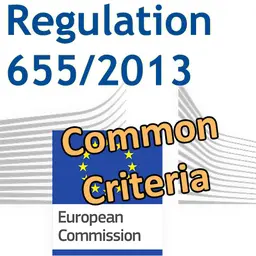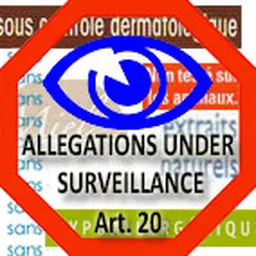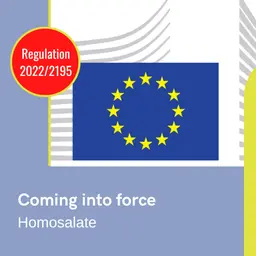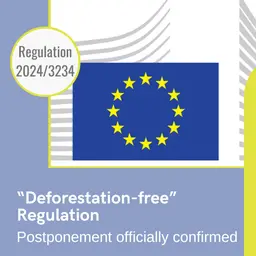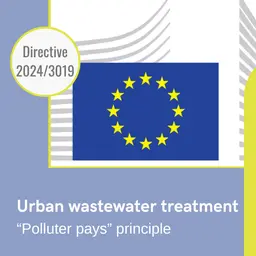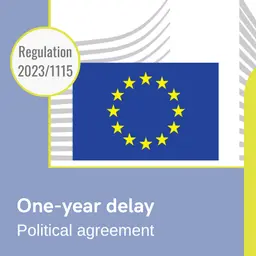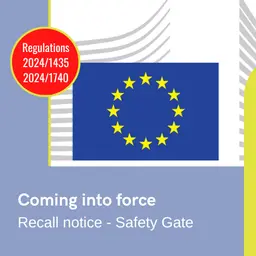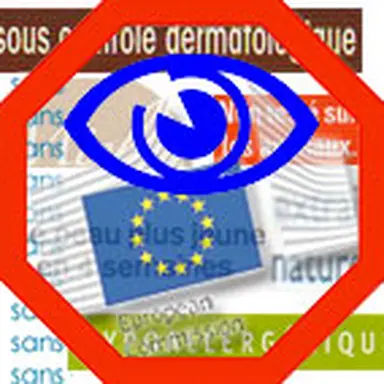
It was to be released no later than July 11, 2016 – it was actually published on September 19. The Commission’s report on the use of cosmetics claims and their compliance with common criteria was much anticipated by the cosmetics industry, since the framework to be defined for claims depends on its conclusions. And as a matter of fact, these are quite reassuring, except for the ‘free-from…’ and ‘Hypoallergenic’ allegations…
The first part of the report deals with the context of cosmetics claims and their use.
Background
Cosmetics encompass a very wide spectrum of products in a variety of product categories, ranging from shampoos, fragrances and hair colours to sunscreens, toothpaste and deodorants. Considering the high number of cosmetic products available on the EU market (more than 1 million different products), it is very important to provide consumers with specific, understandable and reliable information, substantiated using generally accepted methods, to enable them to make informed choices and compare products to find the ones that best suit their needs.
Framework
For cosmetic product claims to meet their purposes adequately, it is important to have an efficient framework in place which ensures that they are fair and do not mislead consumers.
Competent authorities in charge of market surveillance must be able to easily verify all claims based on harmonised common criteria at EU level. The Commission adopted Common Criteria by Regulation 655/2013, for the justification of claims made in relation to cosmetic products.
Article 20 of the Cosmetics Regulation
According to Article 20 of the Cosmetics Regulation, cosmetic claims are text, names, trademarks, pictures and figurative or other signs that explicitly or implicitly convey product characteristics or functions in the labelling, making available on the market and advertising of cosmetic products.
Article 20 requires claims not be used to imply that cosmetic products have characteristics and functions which they do not have.
Common Criteria
The main objective of the Common Criteria is to guarantee a high level of protection for consumers, in particular from misleading cosmetic claims.
The six common criteria are legal compliance, truthfulness, evidential support, honesty, fairness and informed-decision making.
Horizontal legislation
• Directive UCP (UCPD)
The Cosmetics Regulation and Directive 2005/29/EC on business-to-consumer unfair commercial practices have a similar objective, to protect consumers from misleading claims, and the latter may apply in a complementary manner to cosmetic claims, to the extent these qualify as a commercial practice within the meaning of the UCPD.
• Directive MCA (MCAD)
The purpose of Directive 2006/114/EC on misleading and comparative advertising is to protect traders from misleading advertising and to set out the conditions under which comparative advertising is permitted. While the MCAD may in specific cases cover similar practices to those addressed under the UCPD, the assessment of such practices under the MCAD focuses on their impact on competitors.
Self-regulation
Self-regulation has been a long-standing practice in the field of advertising, with the three main parties in the advertising industry (advertisers, agencies and media) working together and committing to specific rules and codes of practice and conduct. The Commission’s Better Regulation Package refers to self-regulatory tools as being important and complementary to regulatory tools.
In 2012, the European cosmetic products association Cosmetics Europe developed a Charter and Guiding Principles on Responsible Advertising and Marketing Communications (C&GPs) regarding advertising of cosmetic products in the EU.
In line with the commitments undertaken in the C&GPs, a first monitoring exercise was carried out in 2015 by the European Advertising Standards Alliance (EASA) across six European countries: France, Hungary, Italy, Poland, Sweden and UK. A total of 1861 advertisements (including 577 television and 1284 print advertisements) of cosmetic products, broadcast/published in September 2014, March 2015 and June 2015, were analysed by SROs. The EASA report indicates a level of compliance with all relevant advertising codes and laws of 91%, as well as with the Common Criteria of 91%; it thus shows the cosmetics industry’s commitment to responsible advertising.
Conclusions
Once the scene set, the report details the market surveillance actions carried out by the supervisory authorities and their results.
Control methods
Article 22 of the Cosmetics Regulation states that Member States must monitor compliance with the Regulation via in-market controls of the cosmetic products made available on the EU market. In July 2014, the Commission sent a letter to all Member States inviting them to carry out market surveillance controls on cosmetic claims.
Contributions were received from 21 Member States, showing that national public health authorities used the common criteria and related guidelines to assess the compliance of cosmetic claims.
Some countries focused more on certain common criteria, such as ‘Legal compliance’, ‘Truthfulness’, ‘Evidential support’ and ‘Honesty’. Others analysed in depth only the ‘Legal compliance’, ‘Fairness’ and ‘Informed decision-making’ criteria. Due to difficulties in certain cases with accessing the product information files from responsible persons that were not in the same country, some criteria, such as ‘Truthfulness’, ‘Evidential support’ and ‘honesty’, were only partially verified.
Most samples used for the analysis represented products containing the following categories of claims:
• Claims characterising ingredients (e.g. ‘anti-ageing’)
• Claims related to the product’s efficacy (e.g. a skin cream with a sun protection factor)
• Claims highlighting the absence of substances (e.g. ‘free from perfume’)
• Claims addressing skin compatibility of the product (e.g. ‘hypoallergenic’, ‘for sensitive or atopic skin’)
• Claims addressing health or additional benefits other than the cosmetic purpose (e.g. sunscreens or intimate hygiene products)
Results
According to the contributions from 21 Member States, 38995 cosmetic claims were analysed in total in 2014 and 2015. There were 3730 non-compliant claims out of 38995 (10%).
The percentage of compliance and non-compliance varies significantly according to the type of product distribution. In some Member States, up to 70% of non-compliant claims were found online, only 17% were found on the actual product, and 13% were found in brochures.
• Product performance
16 out of the 21 Member States that replied stated that they found cases where ‘evidential support’ and ‘honesty’ criteria were breached in products claiming a function that could not be supported with sufficient evidence, with the available studies lacking reproducibility and scientific strength.
This was also the case for claims highlighting the function of one of the substances to be the function of the final product. Due to the low concentration of the substance in the product, its effectiveness could not been achieved and evidential support for the function claimed by the manufacturer was considered insufficient. For example, such products claimed to have a sun protection effect or not to contain any allergens. These claims were considered to be dishonest.
• Medicinal properties, therapeutic effects
10 Member States found claims stating a cosmetic product’s medicinal effect, breaching a number of criteria such as, ‘Informed-decision making’, ‘Honesty’, ‘Evidential support’ and ‘Legal compliance’. They highlighted increased difficulties to distinguish and classify borderline products, i.e. whether a product is a cosmetic or a medicine or a medical device.
Most Member States identified claims with a medicinal effect as being the most dangerously misleading claims for consumers. Believing that a cosmetic product has therapeutic effects and medicinal properties could lead consumers to delay seeing their doctor and follow their own treatment. Such misleading claims included therapeutic effects on skin, blood circulation, deeper tissue, muscles, joints, veins or adipose tissue, anti-inflammatory function, and healing properties. Products claimed to have medicinal functions or curative or biocidal effects, although the responsible person could not give evidence to support this.
• Free from authorised ingredients
10 Member States raised the issue of the ‘Fairness’ criterion being breached in the claims checked because of the denigration of authorised ingredients. Such claims include for instance ‘Free from parabens’ or ‘Free from aluminium’.
20% of the monitored cosmetic products had a ‘Free-from’ claim and many of them were ‘Parabens free’. This claim is attractive for marketing purposes because of the media attention. However, Member States considered that it is against the ‘fairness’ criterion because it denigrates legally authorised ingredients.
• Free from banned ingredients
Some Member States notified that cases of claims highlighting the absence of prohibited ingredients and claims mentioning the respect of EU quality standards and ‘good manufacturing practices’ were considered non-compliant, breaching the ‘Legal compliance’ criterion. Such claims can create confusion for consumers and increase competition with other manufacturers who also comply with the Cosmetics Regulation but do not make this clear.
On the other hand, many Member States stated that claims addressing the absence of ingredients such as alcohol, essential oils or soap were considered to be compliant as it is essential for the consumer to be able to choose to avoid these ingredients for specific reasons such as religion or allergies.
• Hypoallergenic claims
7 Member States reported cases of ‘Hypoallergenic’ claims without supporting documents or evidence. Some national authorities notified claims made about hair dyes, according to which the dyes contained ingredients that guaranteed or offered protection from skin problems (or reduced the risk of allergy) during the colouring process. These products nonetheless contained resorcinol and para-phenylenediamine, which are well known allergens. Claims that attempt to underestimate the risks of allergic reactions associated with the use of hair dyes pose a risk to human health and may prevent consumers from making an informed choice to use the product.
• Presence/absence of ingredients although they were not found/found in the product
5 Member States reported cases of absence of ingredients mentioned in a product claim, which breaches the ‘Truthfulness’ criterion.
• Not tested on animals and the rabbit logo 4 Member States found cases of non-compliance with the ‘Evidential support’ criterion when, although products were claiming to be ‘Not tested on animals’ through the presence of the rabbit logo or text, the responsible person did not have evidence of this for all the cosmetic components.
Since 2013, the Cosmetics Regulation prohibits using cosmetics or substances tested on animals as part of the final cosmetic product.
Future prospects
As the report concludes, ‘The existing European regulatory framework for claims and advertising of cosmetic products is very comprehensive and ensures a high level of consumer protection. At the same time, it enables the European cosmetics industry to be competitive within the EU and in the world.
Based on Member States’ contributions to this report, 90% of analysed cosmetic claims were found compliant with the common criteria set out in regulation (EU) 655/2013.
Most non-compliant claims were found to be misleading as regards the function and performance of the cosmetic product. Furthermore, as also mentioned in the difficulties faced by the national authorities whilst controlling claims on cosmetic products, it was not clear how to regulate the ‘hypoallergenic’ claim and the ‘free-from (an authorised ingredient)’ claim. Such a claim is considered to be denigrating as it is giving a negative impression to the consumer about an authorised and scientifically proven safe ingredient.
All Member States that contributed to the report concurred that there is a need to clarify the ‘free from’ and ‘hypoallergenic’ claims. This could be done through the existing sub-working group on claims and ad hoc technical documents on the two issues.’
So, now it is the results of this working group’s work we are waiting for, so that we can better understand how these two types of claims will be regulated in the future. They should be released in the form of a review of the Guidelines on the implementation of the common criteria that must be met by the claims related to cosmetic products to be used.
The publication is scheduled for the end of 2016.
For further information
• See the full text of the Report from the Commission to the European Parliament and the Council on product claims made based on common criteria in the field of cosmetics

